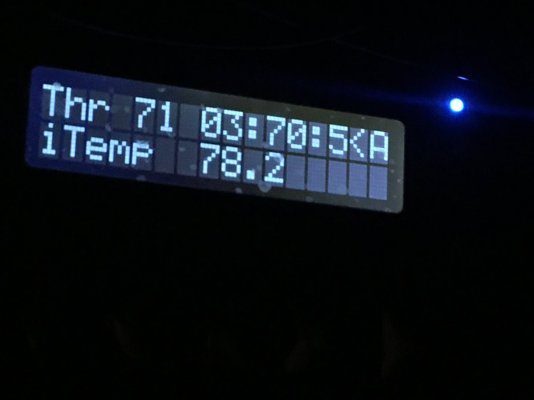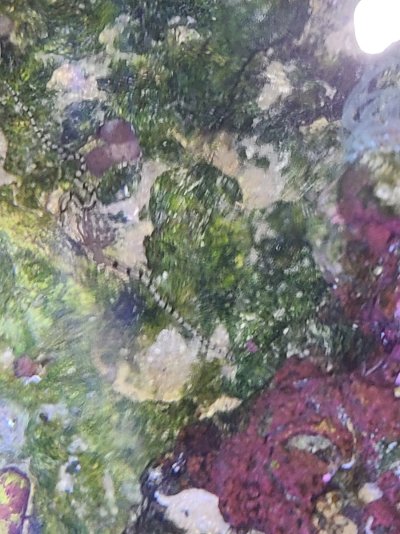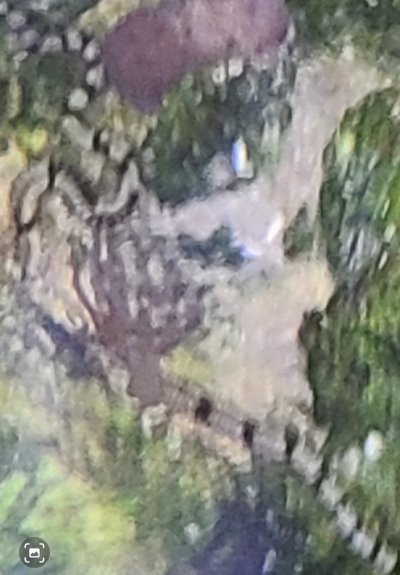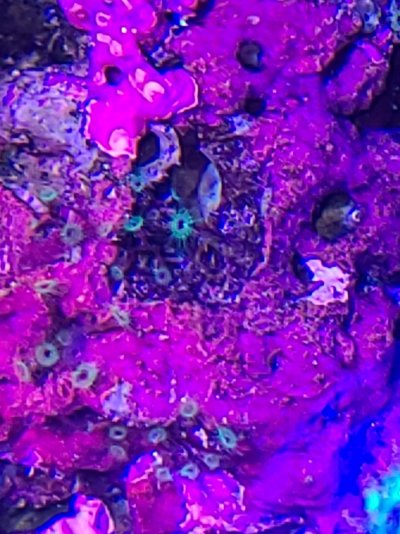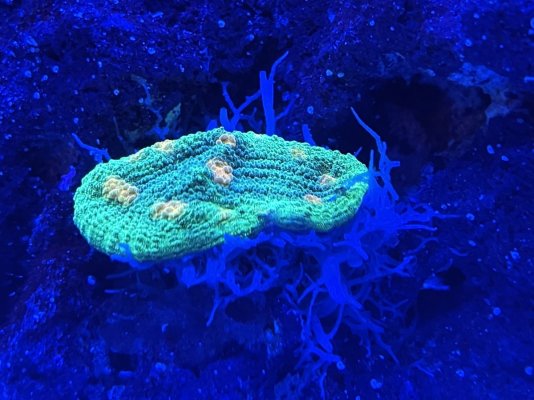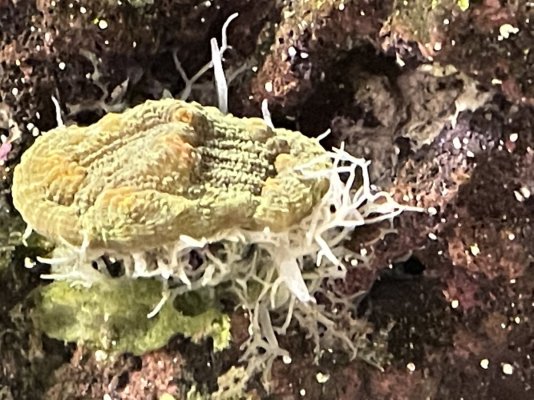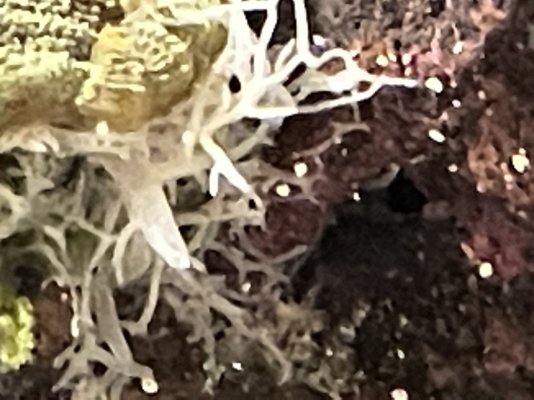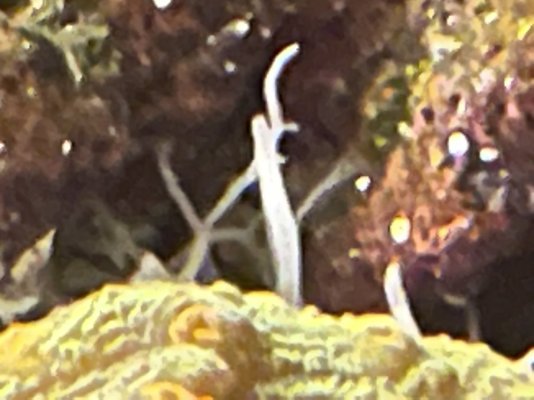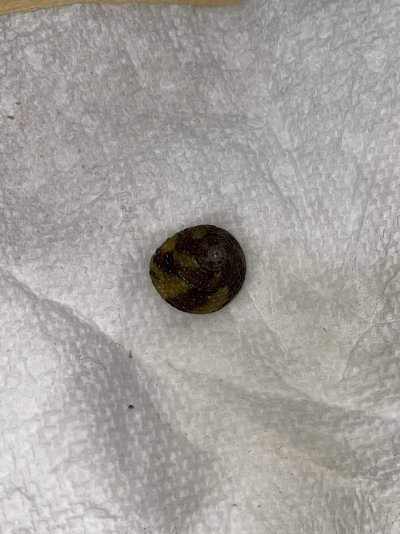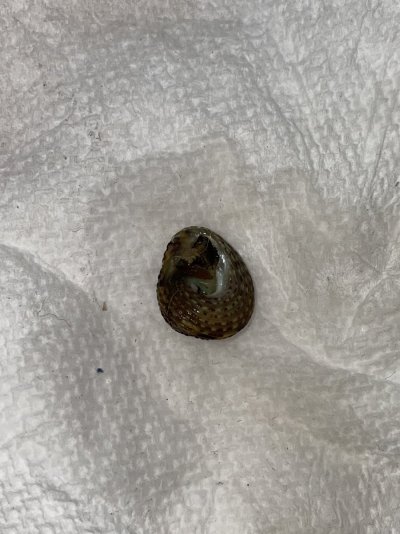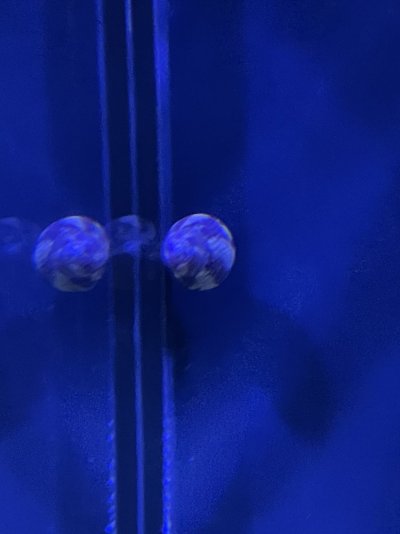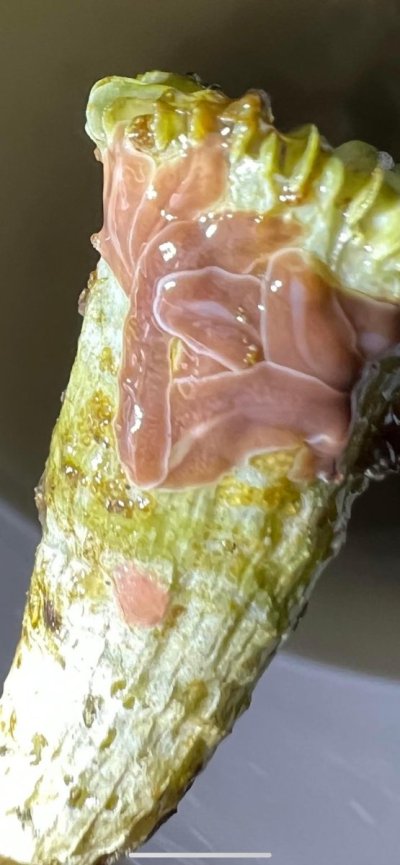Hey Crabs, I'm actually looking for some help with a Reefkeeper Lite. People said you're the go to guy, but I can't send a message for some reason. Anyway, All functions work okay except for timers which I assume is related to the time/date malfunction. Tried a factory reset and adjusting the time/date but still get this (pic attached). Any advice on how to fix this issue? Thanks!Fleshy limpet
Navigation
Install the app
How to install the app on iOS
Follow along with the video below to see how to install our site as a web app on your home screen.
Note: This feature may not be available in some browsers.
More options
You are using an out of date browser. It may not display this or other websites correctly.
You should upgrade or use an alternative browser.
You should upgrade or use an alternative browser.
What is that!! A R2R guide to common new tank hitchhikers.
- Thread starter Crabs McJones
- Start date
- Tagged users None
Crabs McJones
I'm so shi-nay
View Badges
Excellence Award
Reef Tank 365
Article Contributor
Moderator Emeritus
Hospitality Award
Reef Tank 365 Boss
Wisco Reefers
My Tank Thread
Its likely because your account is new. It may have to get some posts on the forum before it'll let you private message. I think they put that rule in to help with spam accounts. So on the timers, are you having issues with AM and PM or just the time being off completely?Hey Crabs, I'm actually looking for some help with a Reefkeeper Lite. People said you're the go to guy, but I can't send a message for some reason. Anyway, All functions work okay except for timers which I assume is related to the time/date malfunction. Tried a factory reset and adjusting the time/date but still get this (pic attached). Any advice on how to fix this issue? Thanks!
Crabs McJones
I'm so shi-nay
View Badges
Excellence Award
Reef Tank 365
Article Contributor
Moderator Emeritus
Hospitality Award
Reef Tank 365 Boss
Wisco Reefers
My Tank Thread
i cant think
Wrasse Addict
View Badges
Excellence Award
Reef Tank 365
Article Contributor
UK Reef Club Member
Rock Pool Reef Keepers
My Tank Thread
My Aquarium Showcase
+1 to this. Either that or a brittle star.Arms of a Serpent Starfish, cool find!
i cant think
Wrasse Addict
View Badges
Excellence Award
Reef Tank 365
Article Contributor
UK Reef Club Member
Rock Pool Reef Keepers
My Tank Thread
My Aquarium Showcase
Looks like colonial hydroids - I have them in my tank but can’t find out how to get rid of them without messing with the rockwork.
I wouldn't get rid of them they are a part of my nutrient processing. 8 months no skimmer no socks no water change minimal uglies with coraline and pineapple sponges growing
- Joined
- Oct 13, 2016
- Messages
- 128
- Reaction score
- 57
About a week later they both split again. Sorry, but that was too scary and so I took them out and disposed of them.Check it out. It split. Cool. Or maybe not. I suppose if the rate of doubling is reasonable, I could keep them under control.
I find reef2reef fascinating and appreciate this thread and all the experience and knowledge from contributors. This is my first post. My tank is only 16 weeks old and is doing pretty well, but I have noticed a strange growth under a Space Invader Chalice. It is firm but flexible, doesn’t seem to react to touch, is definitely getting larger and branching, and doesn’t seem to be bothering the chalice. Any help with identification is appreciated.
Attachments
Crabs McJones
I'm so shi-nay
View Badges
Excellence Award
Reef Tank 365
Article Contributor
Moderator Emeritus
Hospitality Award
Reef Tank 365 Boss
Wisco Reefers
My Tank Thread
Sponges. HarmlessI find reef2reef fascinating and appreciate this thread and all the experience and knowledge from contributors. This is my first post. My tank is only 16 weeks old and is doing pretty well, but I have noticed a strange growth under a Space Invader Chalice. It is firm but flexible, doesn’t seem to react to touch, is definitely getting larger and branching, and doesn’t seem to be bothering the chalice. Any help with identification is appreciated.
Thank you @HomelanderSponges. Harmless
As a newbie, the colorless, branching nature really confused me. I’m happy to know it’s harmless.
i cant think
Wrasse Addict
View Badges
Excellence Award
Reef Tank 365
Article Contributor
UK Reef Club Member
Rock Pool Reef Keepers
My Tank Thread
My Aquarium Showcase
I agree with it being a sponge. However be careful as it could irritate the coral or the coral could irritate the sponge.I find reef2reef fascinating and appreciate this thread and all the experience and knowledge from contributors. This is my first post. My tank is only 16 weeks old and is doing pretty well, but I have noticed a strange growth under a Space Invader Chalice. It is firm but flexible, doesn’t seem to react to touch, is definitely getting larger and branching, and doesn’t seem to be bothering the chalice. Any help with identification is appreciated.
Thank youI agree with it being a sponge. However be careful as it could irritate the coral or the coral could irritate the sponge.
Is there a safe way to remove the sponge without causing it to propagate?
- Joined
- Jul 24, 2018
- Messages
- 100
- Reaction score
- 60
Here to confirm Hydractinia echinata. Any thoughts on natural treatment? These are growing in SPS tissue. It is irritating coral but not necessarily killing it. Any new information would be helpful. I can only find old threads.
Thanks!

Thanks!
Can anyone tell me what this hitchhiker is? 2nd one I’ve seen this weekend. Good or bad? If bad, any removal suggestions? My tank is 70 gallon display and is about 3 months old. 6 fish and about 8 different corals - Zoas, mushrooms, favia and a Duncan.
Attachments
Looks like a banded trouchus snail to me,if so then good part of your cuc.Can anyone tell me what this hitchhiker is? 2nd one I’ve seen this weekend. Good or bad? If bad, any removal suggestions? My tank is 70 gallon display and is about 3 months old. 6 fish and about 8 different corals - Zoas, mushrooms, favia and a Duncan.
One of the greatest things about starting a reef tank is getting your live rock in and admiring all the diversity within it. The rock comes to life different creatures. This is a guide that I, along with a very well known critter identifier @KJ , have put together for the new reefer on what these hitchhikers are and whether they're a keeper or to pull them out.
Bristleworm -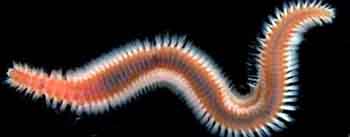
Very common good hitchhiker. The jury is out on whether they're beneficial or not. Most consider them a vital part of your clean up crew. The hide within your live rock, coming out to pick up scraps of food and other detritus. Their numbers can become overwhelming based off how much food is available in the tank. If you overfeed, and they have access to an abundance of food, their numbers will increase dramatically. Be careful not to touch as the bristles on the sides of their bodies can be very irritating and cause an allergic reaction in some.
Fireworm -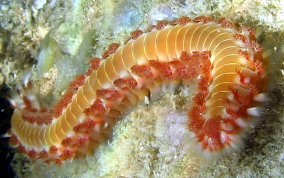
Bad hitchhiker. Similar to the bristle worm, however if stung by the bristles on this little guy, its 10 times worse. DO NOT TOUCH UNDER ANY CIRCUMSTANCES! If found it is best to remove with a trap.
Pineapple Sponges -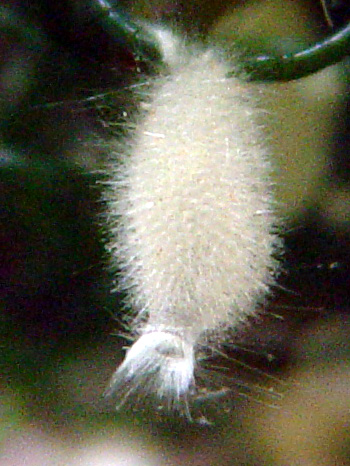
Very common good hitchhiker. These little guys are a type of sponge. They are most commonly found in overflows and in high flow areas of the sump. However, they can sometimes bee seen in shaded areas of your rockwork.
Asterina Starfish -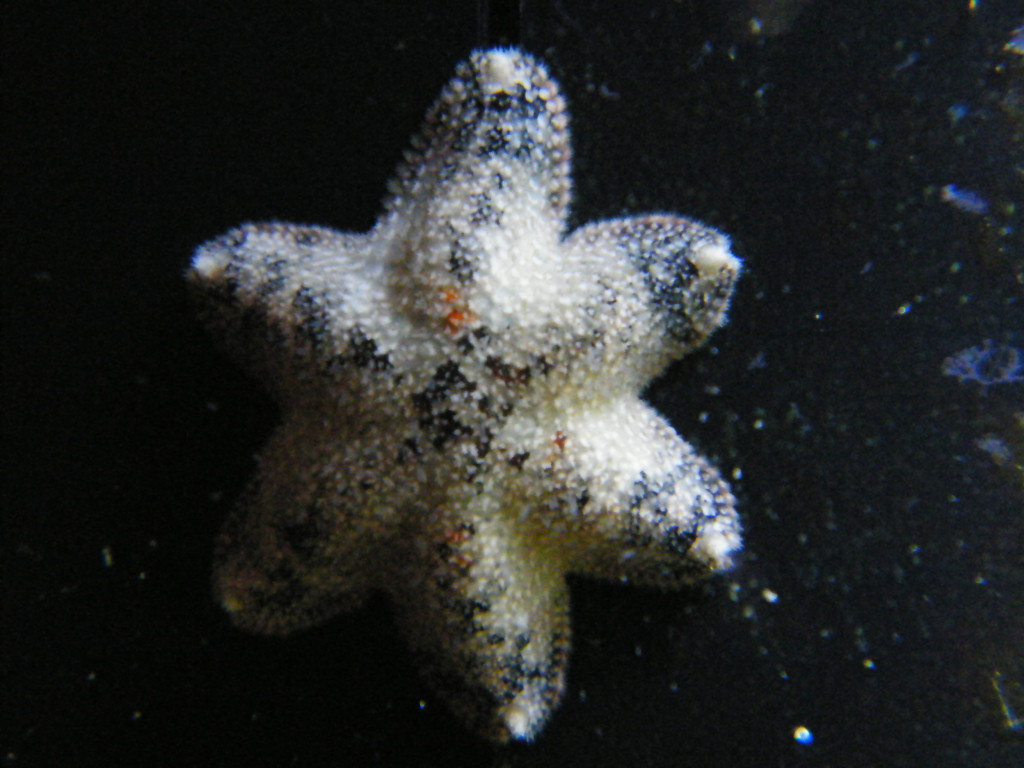
Another common neutral hitchhiker. Jury is out on these guys as to good or bad. Some people love them, some hate them. They've been rumored to munch on coralline algae. They are also known to multiply very rapidly. Manual removal when seen is best to control their numbers.
Aiptasia -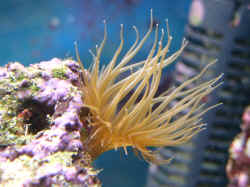
Bad hitchhiker. This is a type of anemone that multiplies very quickly, and stings and kills anything that gets near it. Depended on how many you have, they're best removed by manually scraping them off the rock, and then using epoxy/superglue/kalk paste over where they were to prevent them coming back. A few predators that you can get for them include the peppermint shrimp, berghia nudibranch, and with a large enough tank, copperband butterflyfish.
Majano -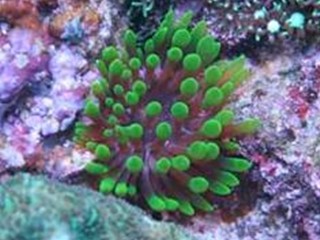
Bad Hitchhiker. This is another pest anemone that multiplies quickly and stings anything near it. Best removed by manual scraping off and super glue/epoxy/kalk past over its spot. Peppermint shrimp will reportedly consume them as well.
Vermedit Snail -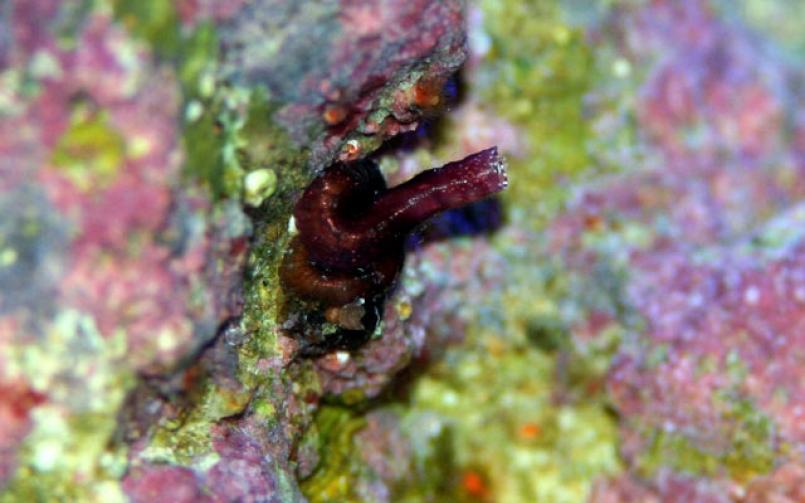
Very common neutral hitchhiker. They are generally harmless, but can multiply quickly based off nutrients in the tank, and can irritate corals. Manual removal or starving them out by putting a dab of superglue on the end of the tube is best to keep their numbers in check, as well as nutrient control.
Spirorbid Worm -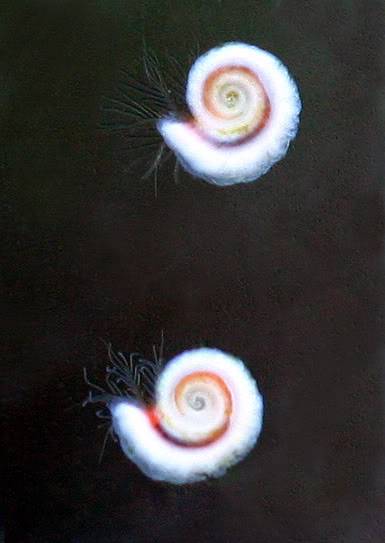
Very common neutral hitchhiker. These guys are most commonly found in overflows, and high flow areas of your sump. Can multiply very quickly and have been rumored to disrupt equipment such as pumps. Nutrient control keeps their numbers in check.
Ball Anemone -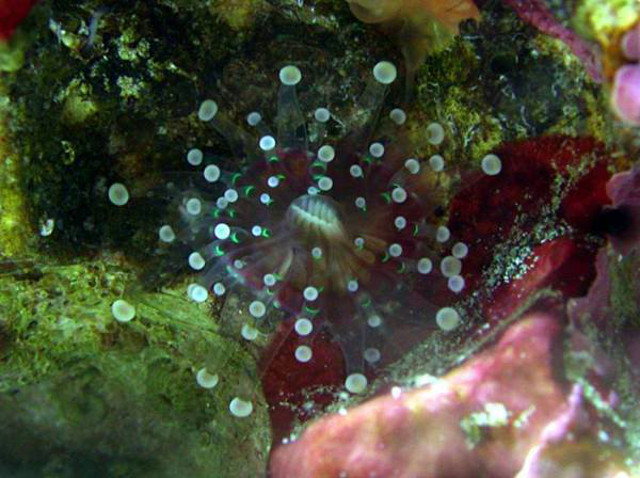
Common neutral hitchhiker. They are found in shaded areas of live rock, and tend to not bother anything and numbers are kept in check with nutrient control. Are removed by the same means as the aiptasia and majano.
Stomatella Snail -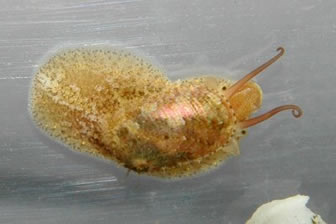
Very good hitchhiker. These guys are a great clean up crew member. They can be very elusive and most commonly found after lights out and are very fast moving. They feed off different algae in the tank.
Copepod/Isopod/Amphipod -
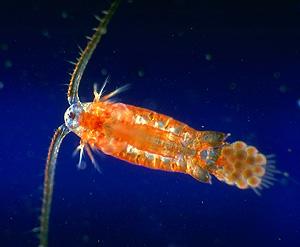

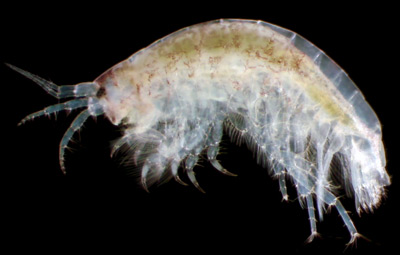
Very good hitchhikers. Often referred to as simply "pods" These little guys live within your rock work and make great food for your fish and corals. They can be the primary diet of certain mandarins.
Spaghetti Worm -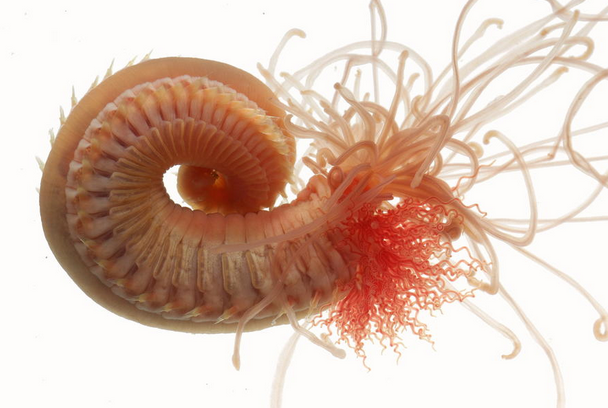
Good hitchhiker. Commonly found in the sand bed or live rock. They extend out multiple tentacles to catch floating detritus. Good member of your clean up crew.
Hydroids -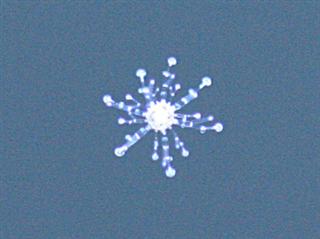

Bad hitchhikers. Good news is that they don't tend to live very long and die off on their own as the tank progresses.
Digitate Hydroids

Bad hitchiker- irritates nearby corals
Sponges -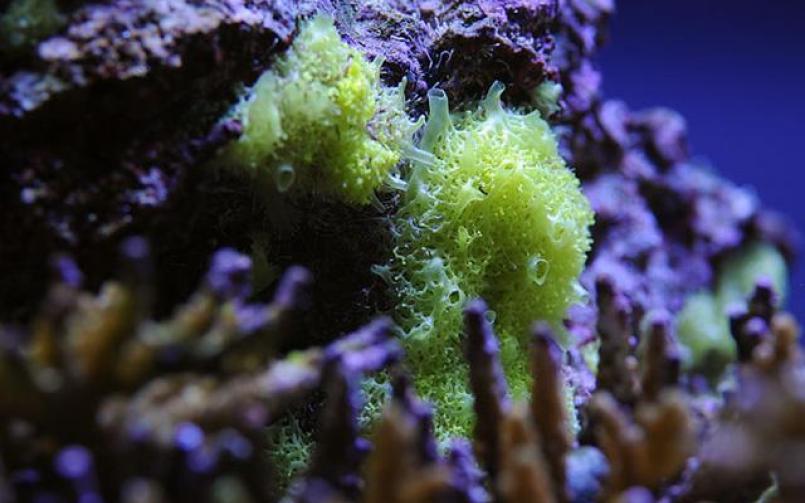
Good hitchhiker. Very common filter feeders. Found in shaded areas of live rock
Serpent And Brittle Starfish -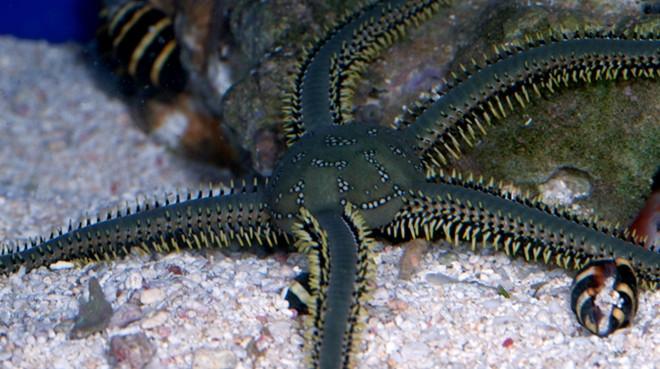
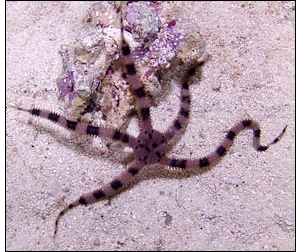
Good hitchhikers. Are most commonly found by the arms extending out from cracks and holes in rock work. Feed off leftover food and detritus in the tank.
Bobbit Worm -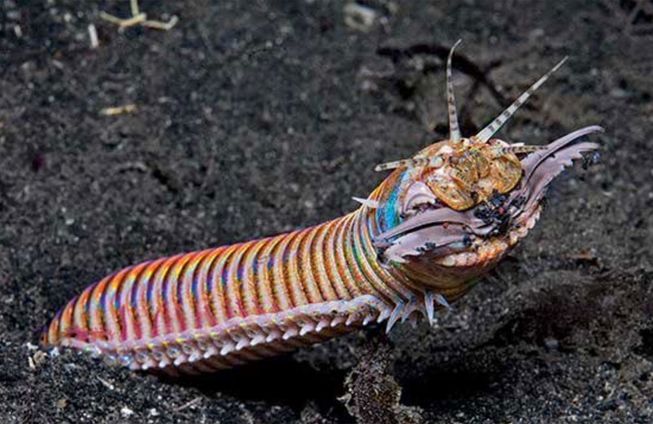
Very bad hitchhiker. These guys can grow to be very large and can kill fish. Most common means of removal is to remove the entire rock where the worm is housed. Be careful of the pincer teeth at the head of the worm.
Tunicate -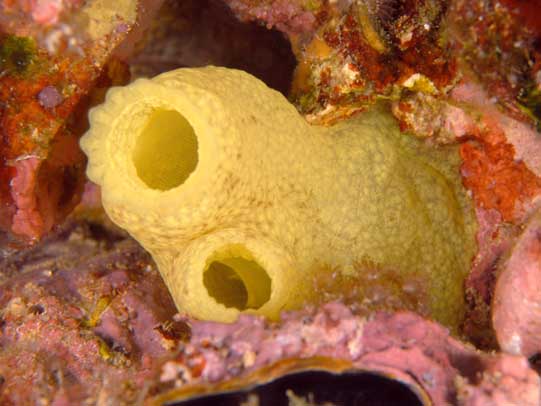
Good hitchhiker. Harmless filter feeder. At first glance looks like a sponge, except it pulses as it takes in and expels water, and reacts to touching it.
Limpet -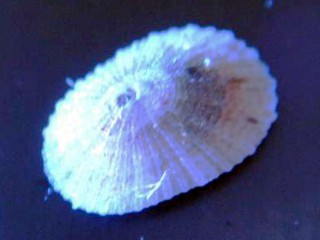
Good hitchhiker. Consumes algae. Don't seem to bother anything.
Fleshy Limpet

Neutral hitchiker. Algae grazer, but have been rumored to bother corals.

Slipper Limpet - Neutral hitchiker. Commonly attached to other snail shells. Don't cause any harm to the Snail or other tank inhabitants
Elephant Slug

Good hitchhiker. Algae grazer.
Chiton -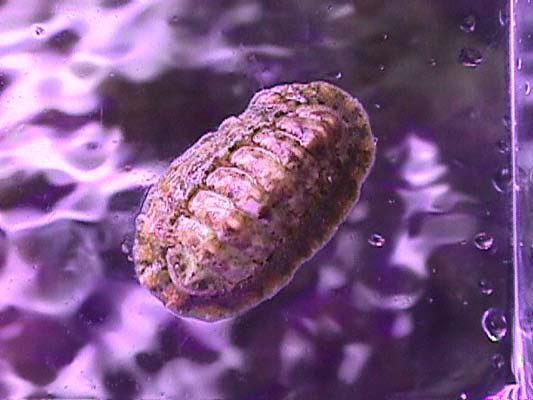
Good hitchhiker. Consumes algae. Does not appear to bother anything.
Peanut Worm -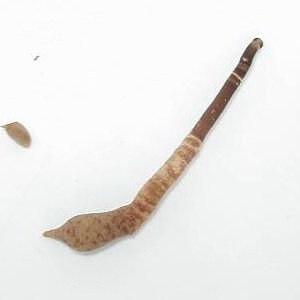
Good hitchhiker. Lives in live rock and feeds off of extra food and detritus.
Gorilla Crab -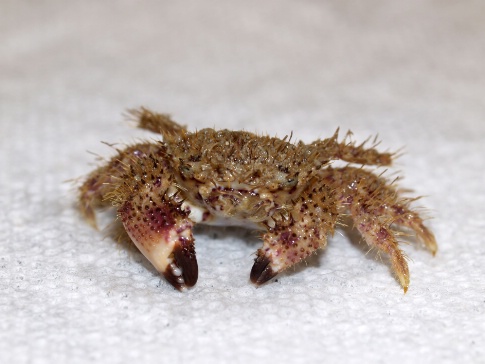
Bad hitchhiker. Can be found in live rock cracks, caves and holes. They are predatory and will hunt your shrimp and inverts. They can also grow rather large.
Benthic Ctenophores -
Been seeing this one pop up more and more lately, so I figured why not add them to the list.
They are a neutral hitchhiker. They mainly filter feed on zooplankton and small particulates in the water. Most commonly referred to as comb jellys.
Red Planaria Flatworm -
Bad Hitchiker. While they don't consume any coral, they can grow in numbers to the point where they smother coral. Caution should be taken as when these die off they release toxins that can wipe out a tank quickly.
Ghost Flatworm -
Neutral hitchiker. Doesn't harm anything. But does consume pods
Acoel Flatworm -
Neutral Hitchiker. Doesn't harm anything, however can grow greatly in numbers quickly
Polyclad Flatworm -
Bad Hitchhiker. Predatory towards clams and coral depended on subspecies.
Pumpkin Flatworm (Waminoa Sp)
Bad Hitchiker. Predatory. Can smother and kill LPS corals.
Acropora Eating Flatworm -
Bad Hitchiker. See name
I did not cover Nudibranch or snails in this thread as there are far to many variations to cover. If you have an unknown, please create a thread or post it in this thread and we'll try our best to ID it for you. If you have any additions to the list please PM me and I'll review it and add to the list.
WOW, that's a great compilation! 4 years of reefing and I still have much to learn. Thanks, your list is super helpful!One of the greatest things about starting a reef tank is getting your live rock in and admiring all the diversity within it. The rock comes to life different creatures. This is a guide that I, along with a very well known critter identifier @KJ , have put together for the new reefer on what these hitchhikers are and whether they're a keeper or to pull them out.
Bristleworm -
Very common good hitchhiker. The jury is out on whether they're beneficial or not. Most consider them a vital part of your clean up crew. The hide within your live rock, coming out to pick up scraps of food and other detritus. Their numbers can become overwhelming based off how much food is available in the tank. If you overfeed, and they have access to an abundance of food, their numbers will increase dramatically. Be careful not to touch as the bristles on the sides of their bodies can be very irritating and cause an allergic reaction in some.
Fireworm -
Bad hitchhiker. Similar to the bristle worm, however if stung by the bristles on this little guy, its 10 times worse. DO NOT TOUCH UNDER ANY CIRCUMSTANCES! If found it is best to remove with a trap.
Pineapple Sponges -
Very common good hitchhiker. These little guys are a type of sponge. They are most commonly found in overflows and in high flow areas of the sump. However, they can sometimes bee seen in shaded areas of your rockwork.
Asterina Starfish -
Another common neutral hitchhiker. Jury is out on these guys as to good or bad. Some people love them, some hate them. They've been rumored to munch on coralline algae. They are also known to multiply very rapidly. Manual removal when seen is best to control their numbers.
Aiptasia -
Bad hitchhiker. This is a type of anemone that multiplies very quickly, and stings and kills anything that gets near it. Depended on how many you have, they're best removed by manually scraping them off the rock, and then using epoxy/superglue/kalk paste over where they were to prevent them coming back. A few predators that you can get for them include the peppermint shrimp, berghia nudibranch, and with a large enough tank, copperband butterflyfish.
Majano -
Bad Hitchhiker. This is another pest anemone that multiplies quickly and stings anything near it. Best removed by manual scraping off and super glue/epoxy/kalk past over its spot. Peppermint shrimp will reportedly consume them as well.
Vermedit Snail -
Very common neutral hitchhiker. They are generally harmless, but can multiply quickly based off nutrients in the tank, and can irritate corals. Manual removal or starving them out by putting a dab of superglue on the end of the tube is best to keep their numbers in check, as well as nutrient control.
Spirorbid Worm -
Very common neutral hitchhiker. These guys are most commonly found in overflows, and high flow areas of your sump. Can multiply very quickly and have been rumored to disrupt equipment such as pumps. Nutrient control keeps their numbers in check.
Ball Anemone -
Common neutral hitchhiker. They are found in shaded areas of live rock, and tend to not bother anything and numbers are kept in check with nutrient control. Are removed by the same means as the aiptasia and majano.
Stomatella Snail -
Very good hitchhiker. These guys are a great clean up crew member. They can be very elusive and most commonly found after lights out and are very fast moving. They feed off different algae in the tank.
Copepod/Isopod/Amphipod -



Very good hitchhikers. Often referred to as simply "pods" These little guys live within your rock work and make great food for your fish and corals. They can be the primary diet of certain mandarins.
Spaghetti Worm -
Good hitchhiker. Commonly found in the sand bed or live rock. They extend out multiple tentacles to catch floating detritus. Good member of your clean up crew.
Hydroids -

Bad hitchhikers. Good news is that they don't tend to live very long and die off on their own as the tank progresses.
Digitate Hydroids

Bad hitchiker- irritates nearby corals
Sponges -
Good hitchhiker. Very common filter feeders. Found in shaded areas of live rock
Serpent And Brittle Starfish -

Good hitchhikers. Are most commonly found by the arms extending out from cracks and holes in rock work. Feed off leftover food and detritus in the tank.
Bobbit Worm -
Very bad hitchhiker. These guys can grow to be very large and can kill fish. Most common means of removal is to remove the entire rock where the worm is housed. Be careful of the pincer teeth at the head of the worm.
Tunicate -
Good hitchhiker. Harmless filter feeder. At first glance looks like a sponge, except it pulses as it takes in and expels water, and reacts to touching it.
Limpet -
Good hitchhiker. Consumes algae. Don't seem to bother anything.
Fleshy Limpet

Neutral hitchiker. Algae grazer, but have been rumored to bother corals.

Slipper Limpet - Neutral hitchiker. Commonly attached to other snail shells. Don't cause any harm to the Snail or other tank inhabitants
Elephant Slug

Good hitchhiker. Algae grazer.
Chiton -
Good hitchhiker. Consumes algae. Does not appear to bother anything.
Peanut Worm -
Good hitchhiker. Lives in live rock and feeds off of extra food and detritus.
Gorilla Crab -
Bad hitchhiker. Can be found in live rock cracks, caves and holes. They are predatory and will hunt your shrimp and inverts. They can also grow rather large.
Benthic Ctenophores -
Been seeing this one pop up more and more lately, so I figured why not add them to the list.
They are a neutral hitchhiker. They mainly filter feed on zooplankton and small particulates in the water. Most commonly referred to as comb jellys.
Red Planaria Flatworm -
Bad Hitchiker. While they don't consume any coral, they can grow in numbers to the point where they smother coral. Caution should be taken as when these die off they release toxins that can wipe out a tank quickly.
Ghost Flatworm -
Neutral hitchiker. Doesn't harm anything. But does consume pods
Acoel Flatworm -
Neutral Hitchiker. Doesn't harm anything, however can grow greatly in numbers quickly
Polyclad Flatworm -
Bad Hitchhiker. Predatory towards clams and coral depended on subspecies.
Pumpkin Flatworm (Waminoa Sp)
Bad Hitchiker. Predatory. Can smother and kill LPS corals.
Acropora Eating Flatworm -
Bad Hitchiker. See name
I did not cover Nudibranch or snails in this thread as there are far to many variations to cover. If you have an unknown, please create a thread or post it in this thread and we'll try our best to ID it for you. If you have any additions to the list please PM me and I'll review it and add to the list.
@Homelander here is one for you to add. Seems to love Euphyllia
Attachments
Similar threads
- Replies
- 11
- Views
- 471
- Replies
- 4
- Views
- 133
- Replies
- 16
- Views
- 288


